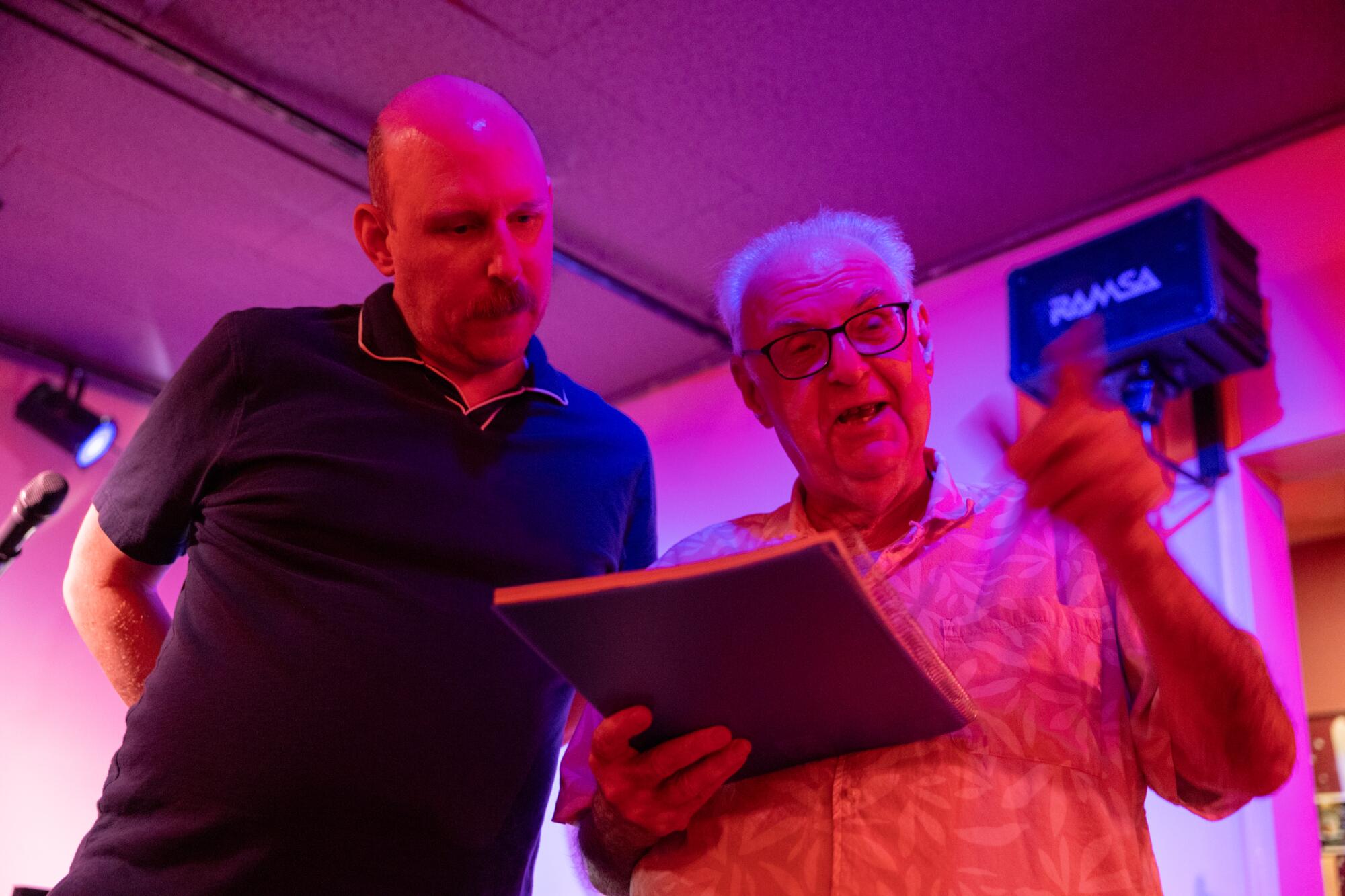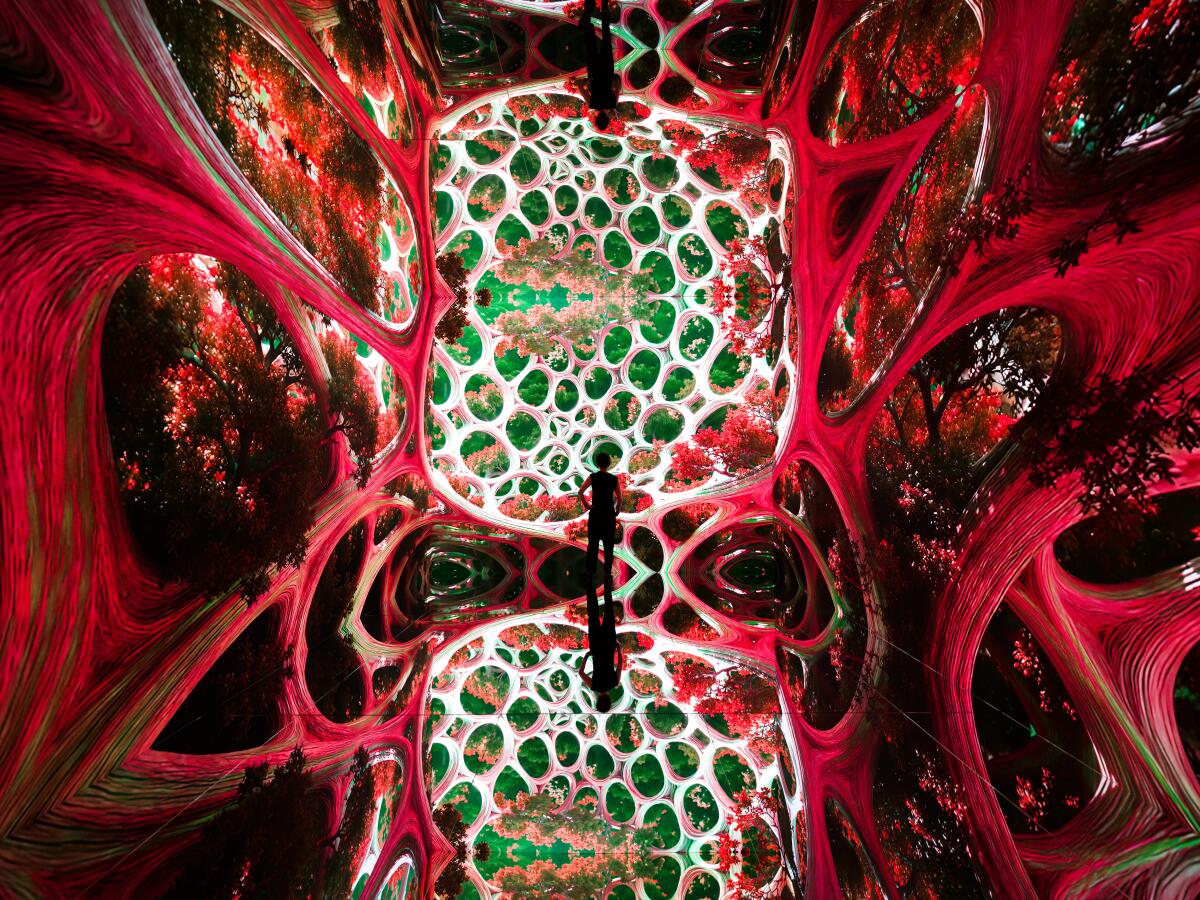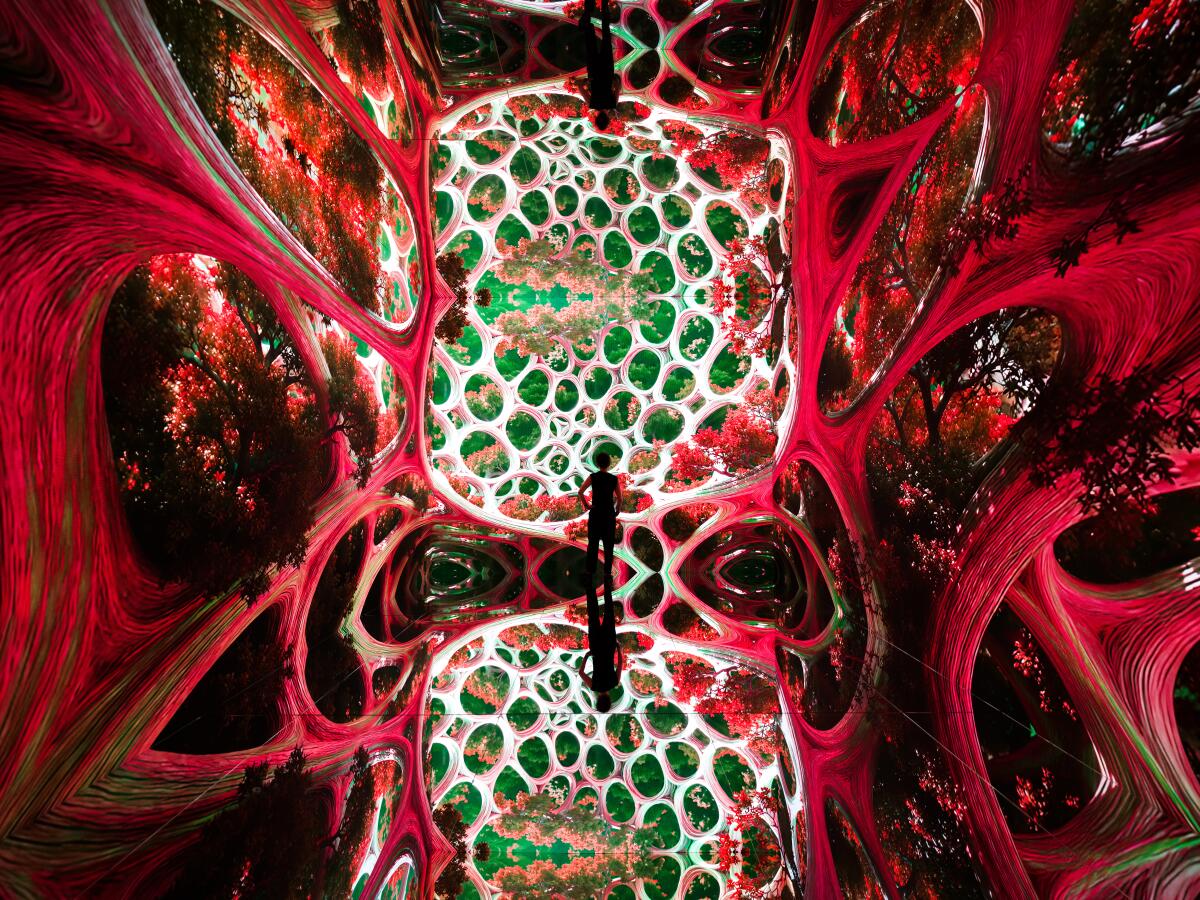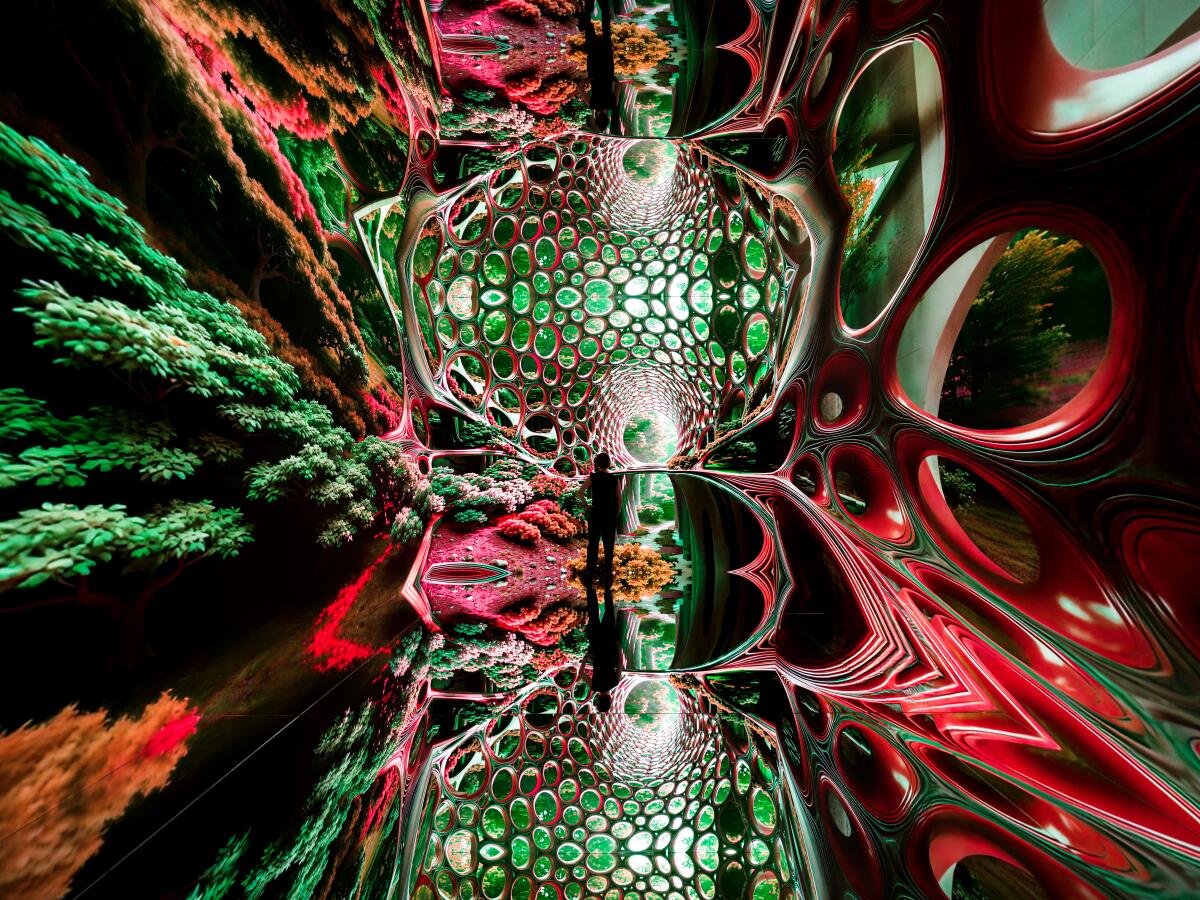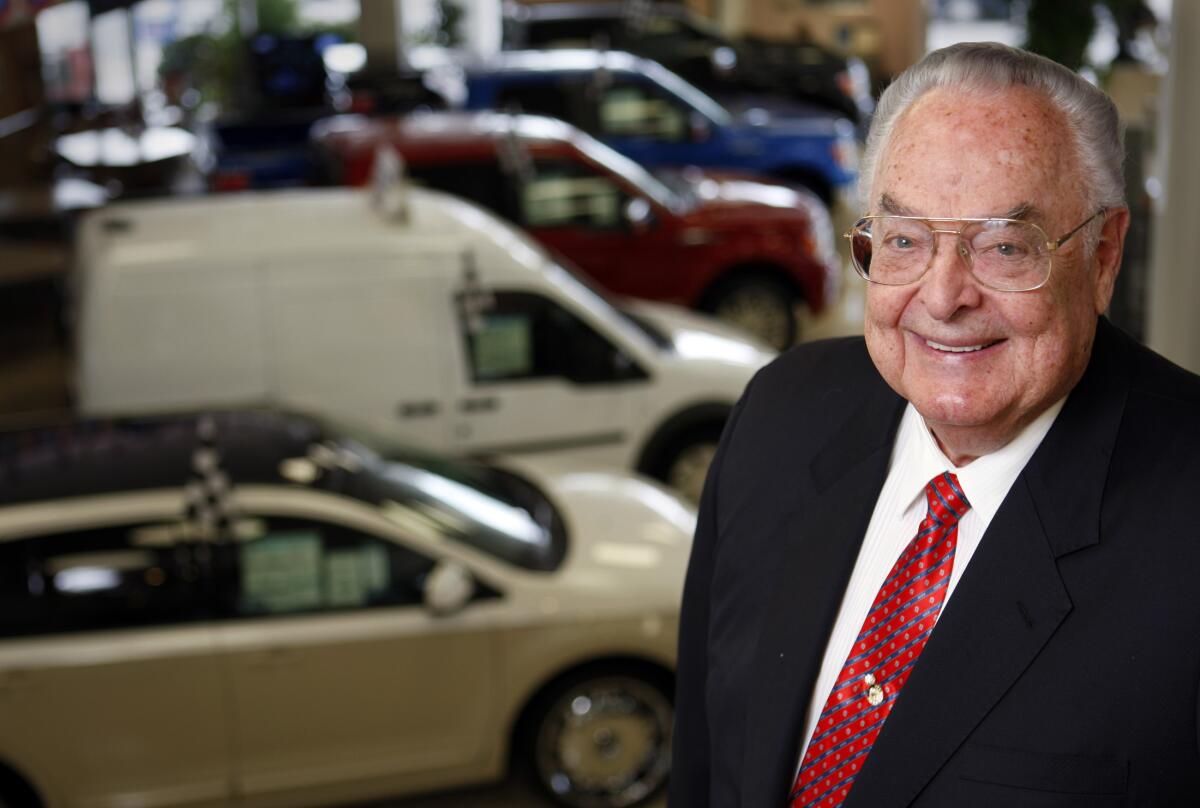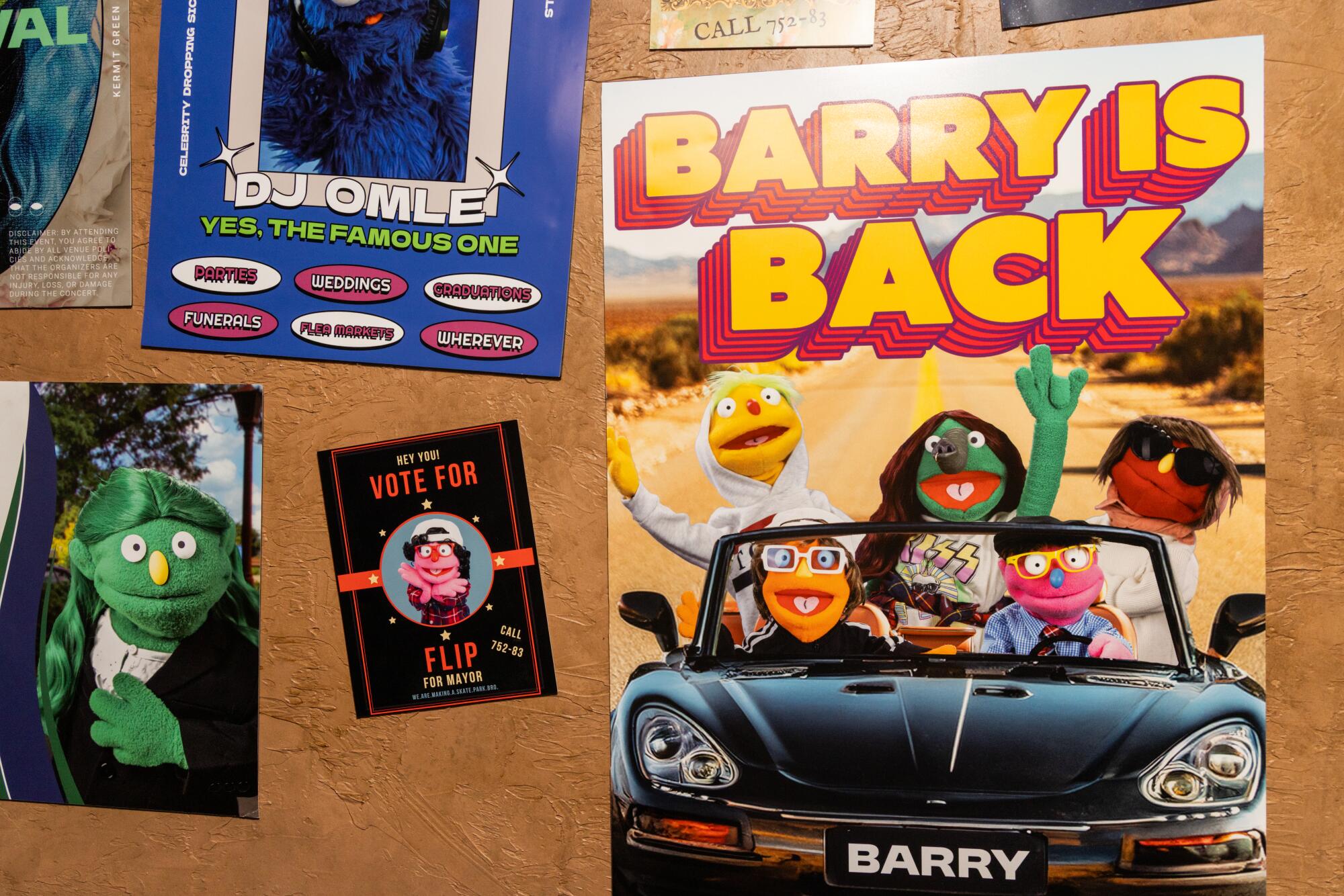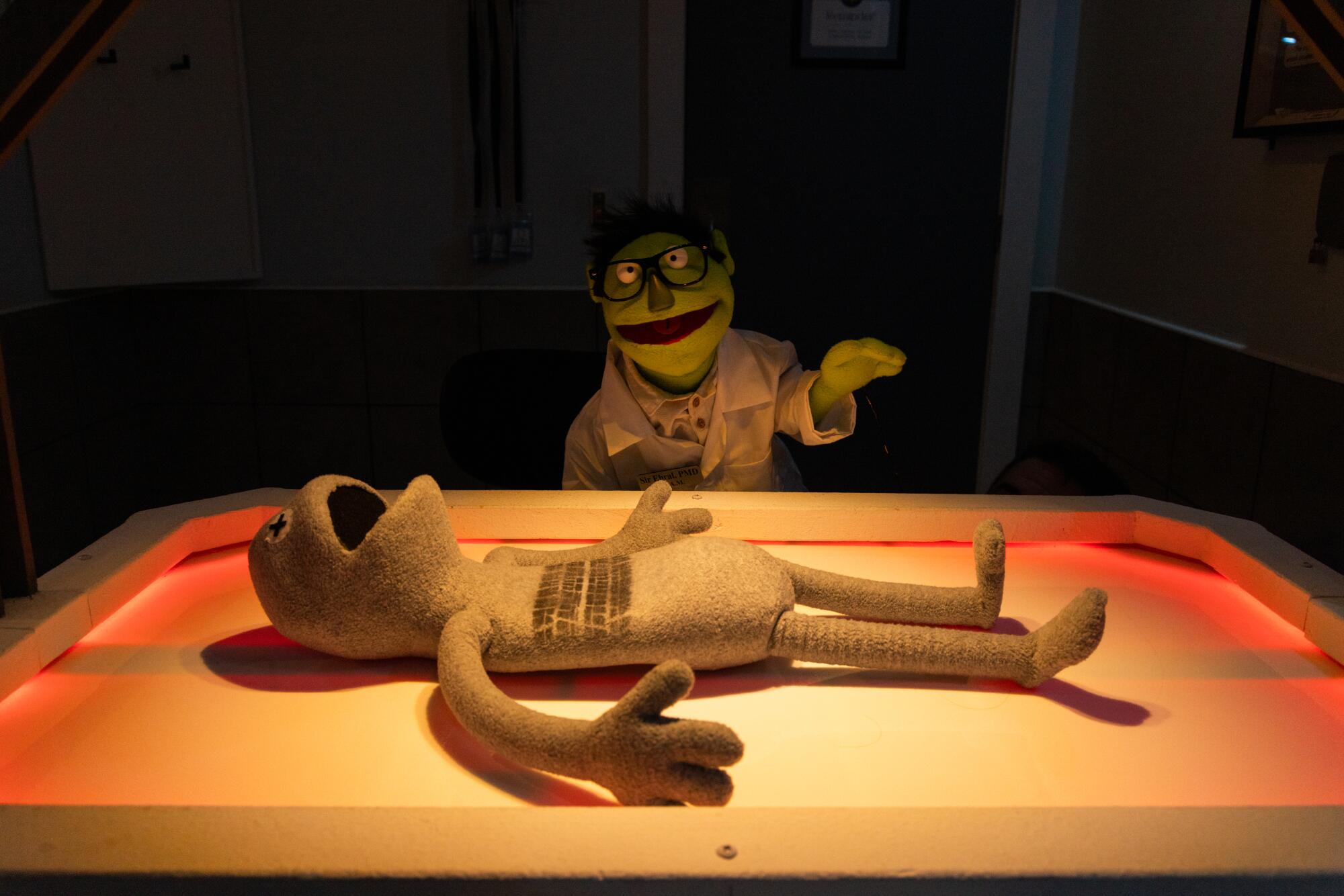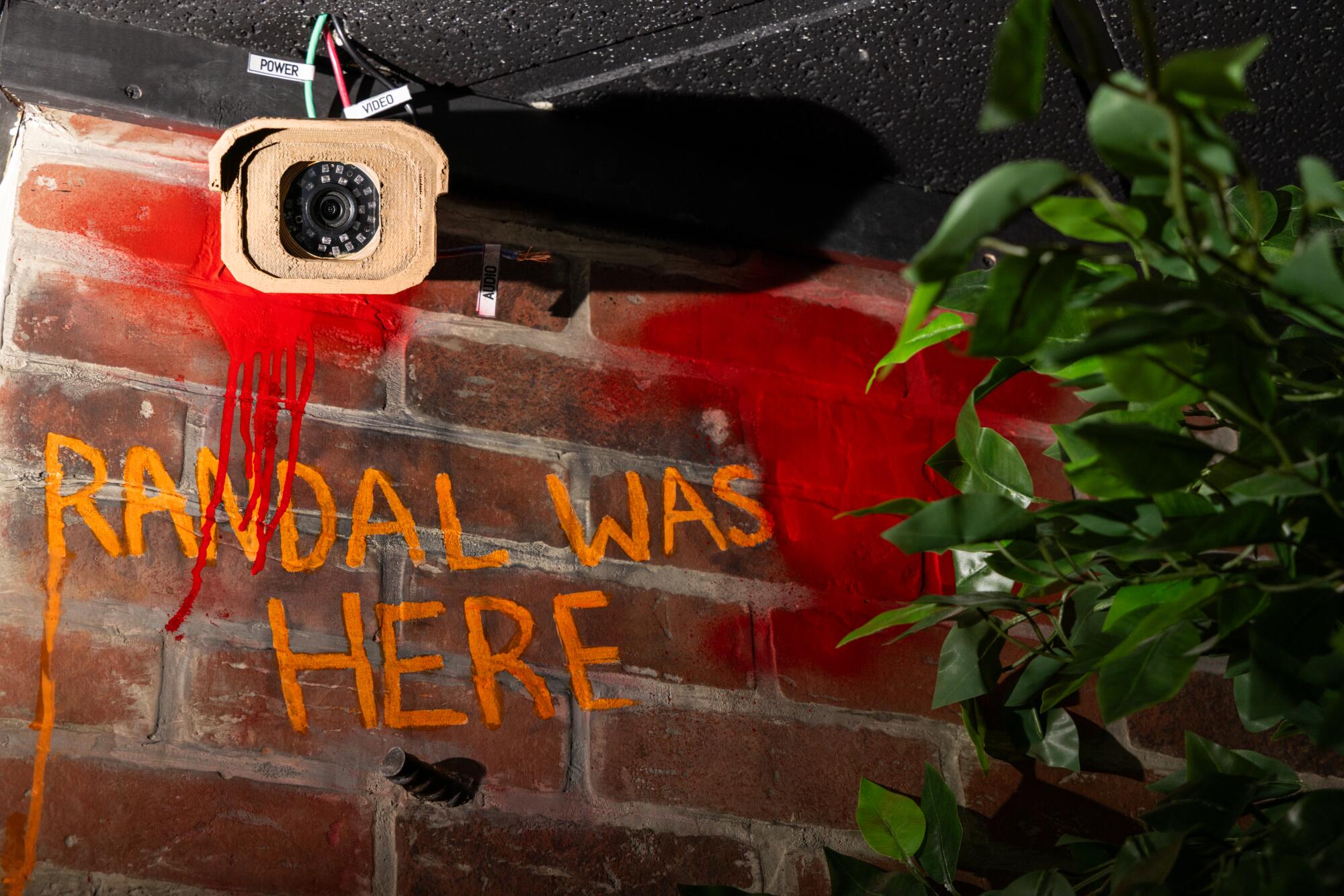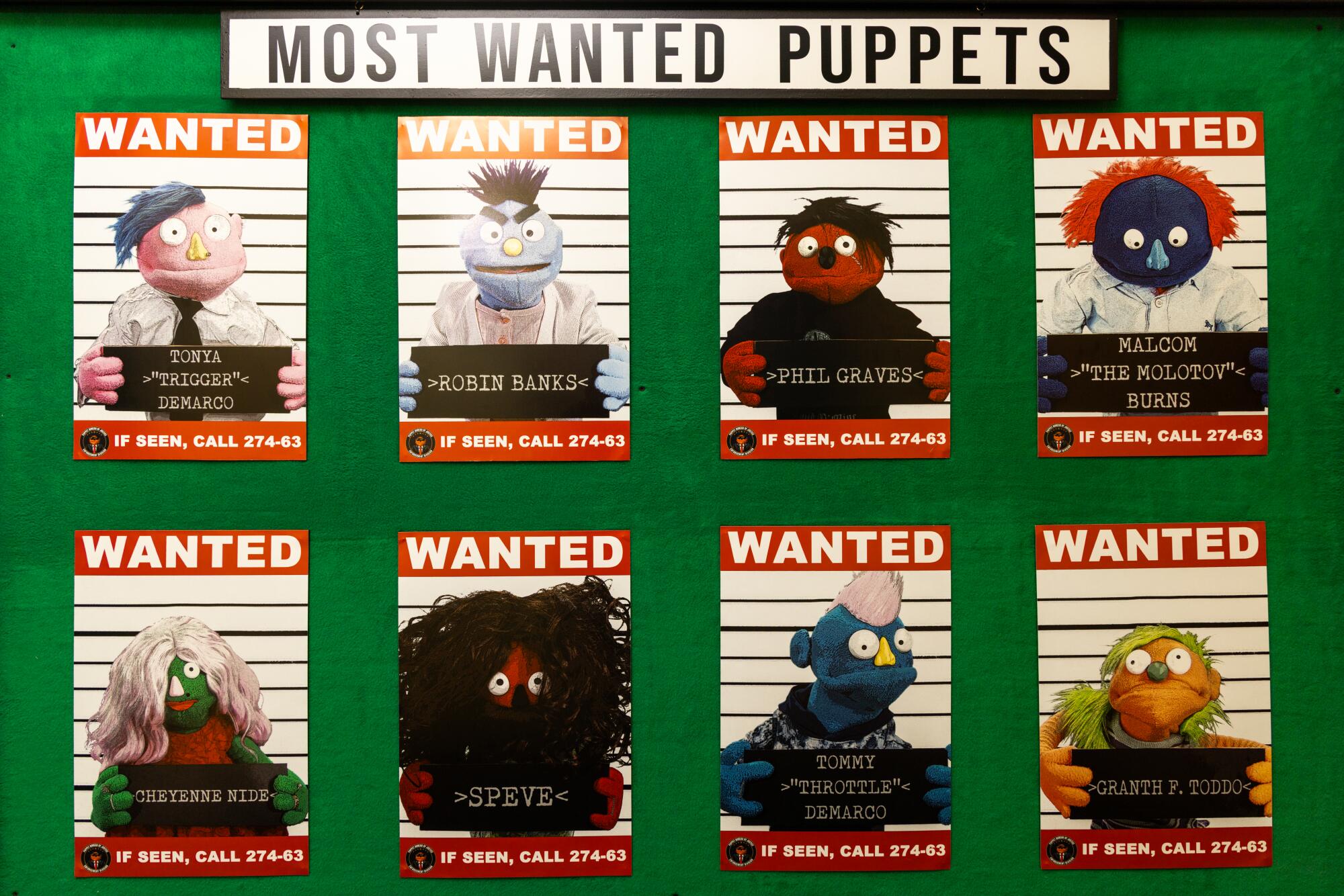Sing jazz with a live band at L.A.’s longest-running open mic night
Elliot Zwiebach was 62 years old when he sang in front of a live audience for the first time.
The retired reporter had always loved show tunes, but he’d never considered singing in public before.
“I sang for my own amusement, and I wasn’t very amused,” he said recently.
But one night, after attending a few open mic nights at the Gardenia Supper Club in West Hollywood as a spectator, he got up the nerve to step onto the stage and perform a tune backed by a live band.
For his first song, he picked the humorous “Honey Bun” from the Rodgers and Hammerstein musical “South Pacific.” It was frightening and he didn’t sing well. And yet, the following week he came back and did it again.
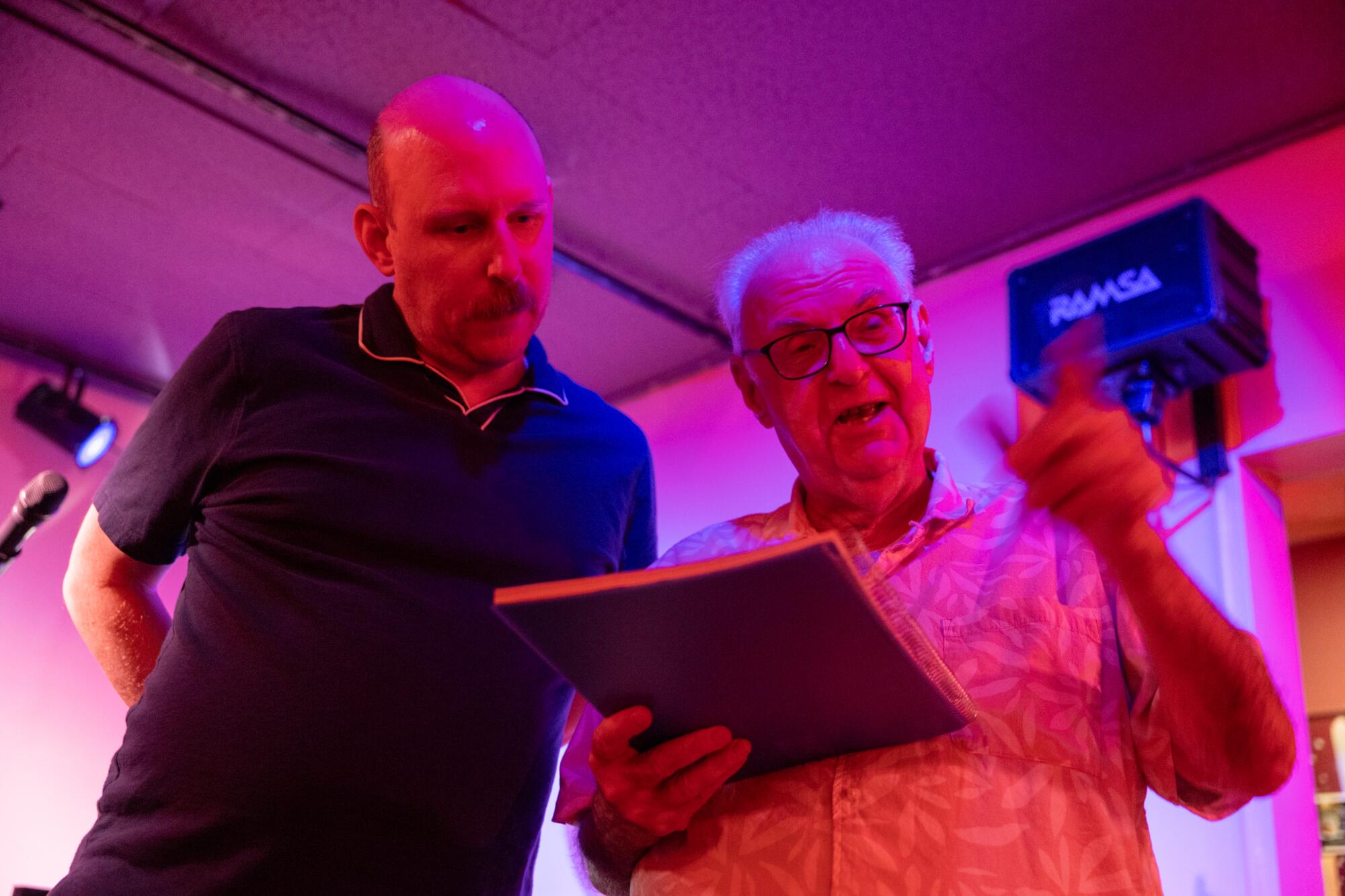
Newbie Ian Douglas, left, and longtime singer Elliot Zwiebach look over a sign-up sheet at the Gardenia’s long-running open mic night.
Sixteen years later, Zwiebach, now 78, is a core member of what the event’s longtime host Keri Kelsey calls “the family,” a group of roughly 25 regulars who sing jazz standards, show tunes and other numbers from the Great American Songbook at the longest-running open mic night in L.A.
“It’s very much like a community,” Zwiebach said on a recent evening as he prepared to sing “This Nearly Was Mine,” another song from “South Pacific.” “Everyone knows everyone.”
For 25 years, the small, L-shaped Gardenia room on Santa Monica Boulevard has served as a musical home for a diverse group of would-be jazz and cabaret singers. Each Tuesday night, elementary school teachers, acting coaches, retired psychoanalysts, arts publicists and the occasional celebrity pay an $8 cover to perform in front of an audience that knows firsthand just how terrifying it can be to stand before even a small crowd with nothing more than a microphone in your hand.
“You are so vulnerable up there with everyone staring at you,” said Kelsey, who has hosted the open mic night for 24 years and once watched Molly Ringwald nervously take the stage. “But it’s also the most joyous experience in the world.”
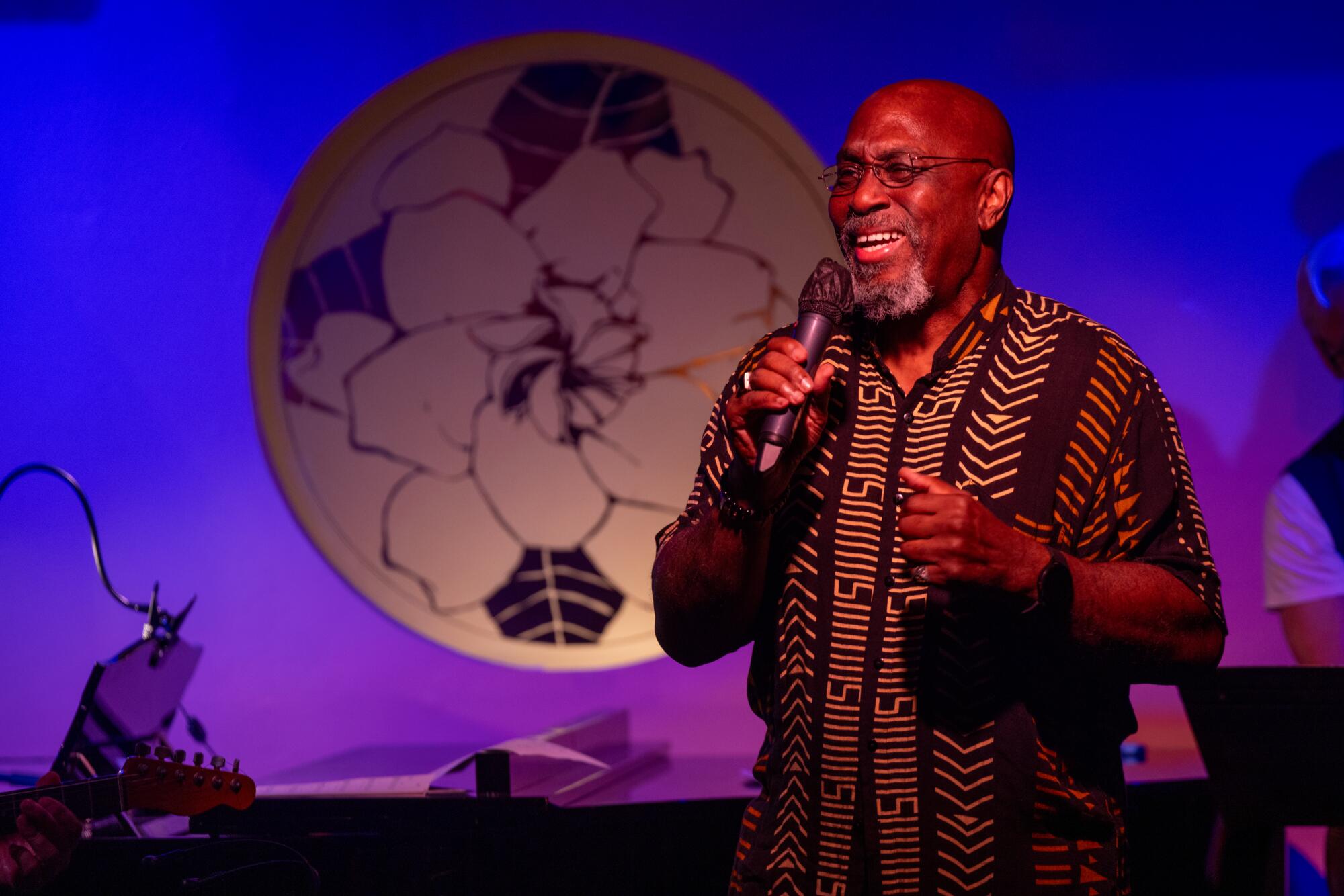
Director and acting coach Kenshaka Ali sings “Goodbye Pork Pie Hat” by Rahsaan Roland Kirk.
The singers are backed by a live, three-piece band led by guitarist Dori Amarilio. The rotating group of musicians — a few of them Grammy winners — arrive not knowing what they will be playing that night. Some singers bring sheet music, others chord charts. And there are those who just hum a few bars and allow the musicians to intuit the key and melody enough to follow along. Poet Judy Barrat, a regular attendee, usually hands the evening’s piano player a copy of the poem she’ll be reading and asks him to improv along with her.
“It’s totally freeform,” said Andy Langham, a jazz pianist who toured with Natalie Cole and Christopher Cross and often plays the Gardenia. “I read the stanzas and try to paint pictures with the notes.”

Keri Kelsey, singing “Mack the Knife,” has hosted the Gardenia’s open mic night for 24 years.
The Gardenia, which opened in 1981, is one of the few venues in L.A. specifically designed for the intimacy of cabaret. The small, spare room has table service seating for just over 60 patrons and a stage area beautifully lit by an abundance of canned lights. Doors open at 7 p.m. on Tuesday nights, but those in the know line up outside the building’s nondescript exterior as early as 6 p.m. to ensure a reasonable spot on the night’s roster of singers. (Even though there is a one-song-per-person limit, the night has been known to stretch past 12 a.m.) Nichole Rice, who manages the Gardenia, takes dinner and drink orders until the show starts at 8:30 p.m. Then the room falls into respectful silence.
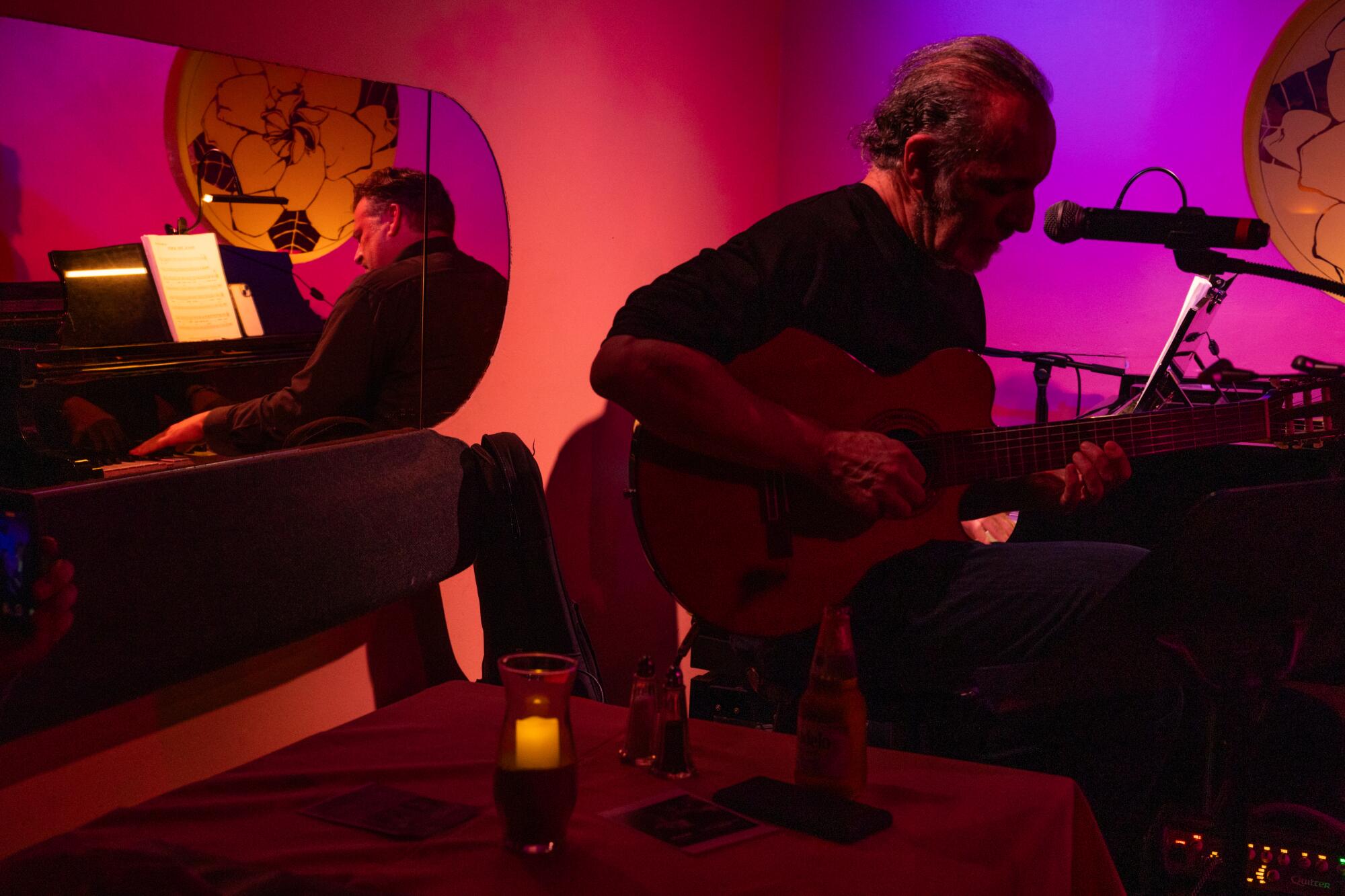
Pianist Andy Langham and guitarist Dori Amarilio perform live music accompaniment for each open mic participant at the Gardenia.
“This is a listening room,” said singer-songwriter Steve Brock, who has been attending the open mic night for more than a decade. “I’ve been to other rooms where I’m competing with tequila or the Rams. Here, when anyone goes up in front of that microphone, everyone stops.”
On a recent Tuesday night, the show began as it always does with an instrumental song by the band (a piano, guitar and upright bass) before an opening number by Kelsey. Dressed in a black leather dress and knee-high boots, she had this time prepared “Mack the Knife.” “This may be one of the loungiest lounge songs ever,” she said. “Maybe that’s why I really like it.”
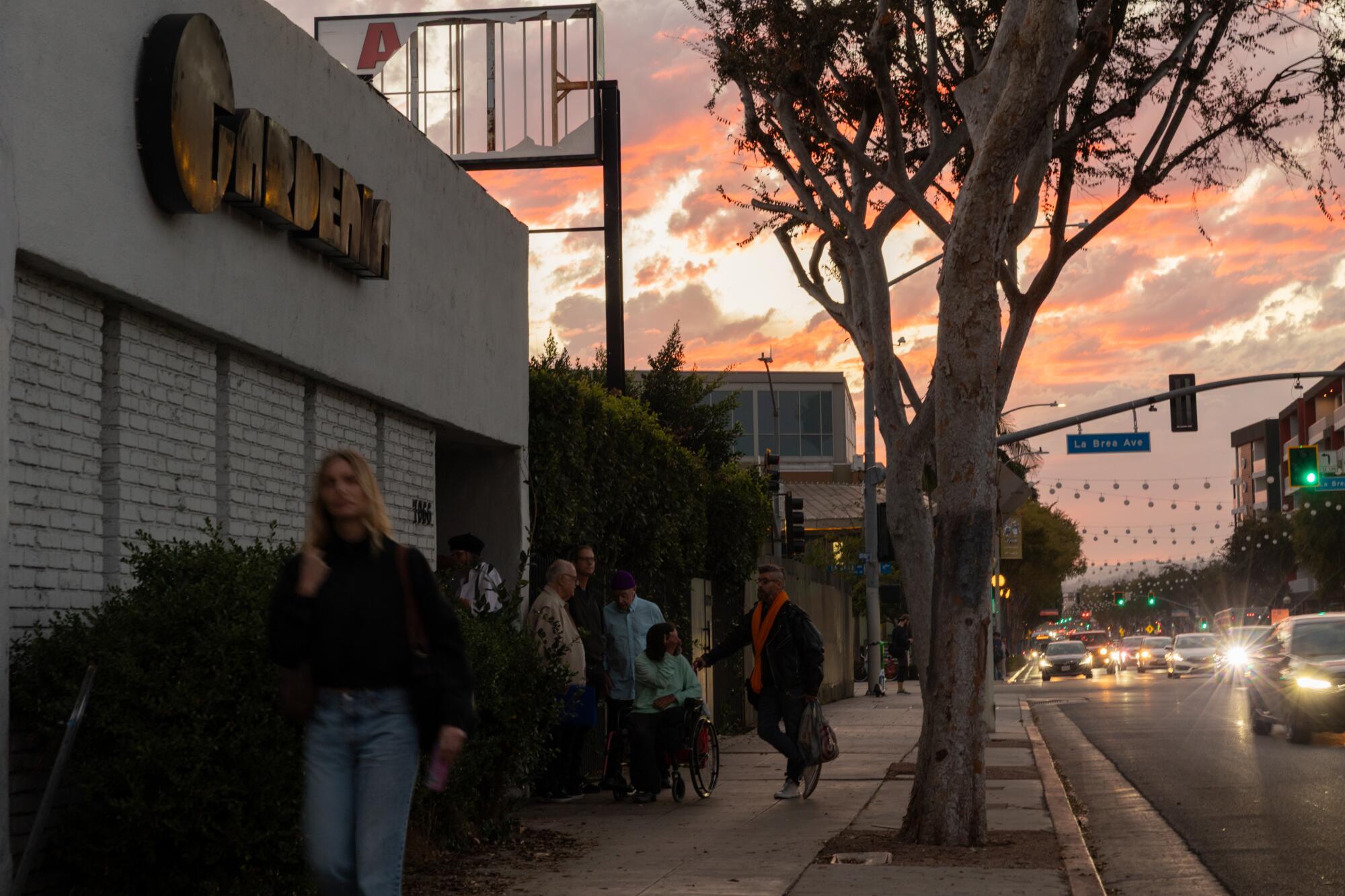
People begin to line up outside the Gardenia at 6 p.m. to get a spot for the Tuesday open mic night.
The first singer to take the stage was Trip Kennedy, a bearded masseur who performed “The Rainbow Connection” in a sweet tenor. When he finished, Kelsey shared that she was cast as an extra in “The Muppets Take Manhattan.”
“It was the most ridiculous thing,” she said, filling time as the next singer consulted quietly with the band. “I was a college student who dressed up as a college student for the audition.”
Dolores Scozzesi, who sang at the Hollywood Improv in the ’80s between comedy sets, performed a moody arrangement of “What Now My Love.” “This is a [chord] chart from 2011,” she told the audience before she began. “I want to try it because these guys are the best.”

Monica Doby Davis, an elementary school teacher, sings the jazz standard “You Go to My Head” at the Gardenia.
Zwiebach performed a medley of two Broadway hits, “I’ve Grown Accustomed to Her Face” (which he altered to “his face”) and “This Nearly Was Mine,” easily hitting all the notes. After, his young friend Ian Douglas, a relative newbie who started attending the open mic night in the spring, sang the jazz standard “You Go to My Head.” Zwiebach praised the performance.
“I know that song very well and you did a great job,” he said.
Monica Doby Davis, who once sang with the ’90s R&B girl group Brownstone and now works as an elementary school teacher, also performed “You Go to My Head.” Although she had left the entertainment business decades ago, she said finding the Gardenia open mic night 13 years ago “brought music back to my life.”

Tom Nobles, left, sings alongside bassist Adam Cohen, center, and pianist Andy Langham at the Gardenia.
There were many beautiful, intimate moments that night, but perhaps the best was when Tom Nobles, an actor and retired psychoanalyst in a purple knit cap and thick plastic glasses, forgot the words to “Lost in the Masquerade” by George Benson.
He stumbled for a moment, a bit perplexed, before turning to his friends for help.
“Whoever knows the words, sing it with me,” Nobles said to the crowd.
Quietly at first and then louder and stronger, the whole room broke out into song.
We’re lost in a masquerade. Woohoo, the masquerade.
